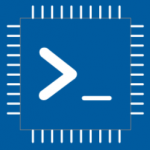Advertisement
Not a member of Pastebin yet?
Sign Up,
it unlocks many cool features!
- /********* Pleasedontcode.com **********
- Pleasedontcode thanks you for automatic code generation! Enjoy your code!
- - Terms and Conditions:
- You have a non-exclusive, revocable, worldwide, royalty-free license
- for personal and commercial use. Attribution is optional; modifications
- are allowed, but you're responsible for code maintenance. We're not
- liable for any loss or damage. For full terms,
- please visit pleasedontcode.com/termsandconditions.
- - Project: "Oximeter Integration"
- - Source Code NOT compiled for: Arduino Uno
- - Source Code created on: 2024-06-10 17:23:01
- ********* Pleasedontcode.com **********/
- /****** SYSTEM REQUIREMENTS *****/
- /****** SYSTEM REQUIREMENT 1 *****/
- /* Develop a heart rate and SpO2 monitoring system */
- /* using the MAX30100 sensor connected via I2C (SDA: */
- /* A4, SCL: A5) and an interrupt pin (D2). Display */
- /* real-time data on an OLED screen. */
- /****** END SYSTEM REQUIREMENTS *****/
- /****** DEFINITION OF LIBRARIES *****/
- #include <Wire.h>
- #include <Adafruit_GFX.h>
- #include <Adafruit_SSD1306.h>
- #include <MAX30100_PulseOximeter.h> // https://github.com/gabriel-milan/Arduino-MAX30100
- /****** FUNCTION PROTOTYPES *****/
- void setup(void);
- void loop(void);
- void onBeatDetected(void);
- /***** DEFINITION OF DIGITAL INPUT PINS *****/
- const uint8_t display_MAX30100_INT_PIN_D2 = 2;
- /***** DEFINITION OF I2C PINS *****/
- const uint8_t display_MAX30100_I2C_PIN_SDA_A4 = A4;
- const uint8_t display_MAX30100_I2C_PIN_SCL_A5 = A5;
- /****** DEFINITION OF LIBRARIES CLASS INSTANCES*****/
- PulseOximeter pox; // Create an instance of the PulseOximeter class
- Adafruit_SSD1306 display(128, 64, &Wire); // Create an instance of the OLED display class
- /****** CALLBACK FUNCTION *****/
- // Callback (registered below) fired when a pulse is detected
- void onBeatDetected()
- {
- Serial.println("Beat!");
- }
- void setup(void)
- {
- // Initialize serial communication
- Serial.begin(115200);
- // Initialize the interrupt pin
- pinMode(display_MAX30100_INT_PIN_D2, INPUT_PULLUP);
- Serial.print("Initializing pulse oximeter..");
- // Initialize the PulseOximeter instance
- if (!pox.begin()) {
- Serial.println("FAILED");
- for(;;);
- } else {
- Serial.println("SUCCESS");
- }
- // Register a callback for the beat detection
- pox.setOnBeatDetectedCallback(onBeatDetected);
- // Initialize the OLED display
- if (!display.begin(SSD1306_I2C_ADDRESS, 0x3C)) {
- Serial.println(F("SSD1306 allocation failed"));
- for(;;);
- }
- display.display();
- delay(2000); // Pause for 2 seconds
- // Clear the buffer
- display.clearDisplay();
- display.setTextSize(1); // Normal 1:1 pixel scale
- display.setTextColor(SSD1306_WHITE); // Draw white text
- display.setCursor(0, 0); // Start at top-left corner
- display.print(F("Initializing..."));
- display.display();
- delay(1000);
- }
- void loop(void)
- {
- // Make sure to call update as fast as possible
- pox.update();
- // Asynchronously dump heart rate and oxidation levels to the serial
- // For both, a value of 0 means "invalid"
- static uint32_t tsLastReport = 0;
- const uint32_t REPORTING_PERIOD_MS = 1000;
- if (millis() - tsLastReport > REPORTING_PERIOD_MS) {
- float heartRate = pox.getHeartRate();
- uint8_t spO2 = pox.getSpO2();
- Serial.print("Heart rate:");
- Serial.print(heartRate);
- Serial.print("bpm / SpO2:");
- Serial.print(spO2);
- Serial.println("%");
- // Clear the display buffer
- display.clearDisplay();
- // Display heart rate
- display.setCursor(0, 0);
- display.print(F("Heart rate: "));
- display.print(heartRate);
- display.println(F(" bpm"));
- // Display SpO2
- display.print(F("SpO2: "));
- display.print(spO2);
- display.println(F(" %"));
- // Update the display
- display.display();
- tsLastReport = millis();
- }
- }
- /* END CODE */
Advertisement
Add Comment
Please, Sign In to add comment
Advertisement

